I Dig Sports
Okung files complaint against NFLPA with NLRB
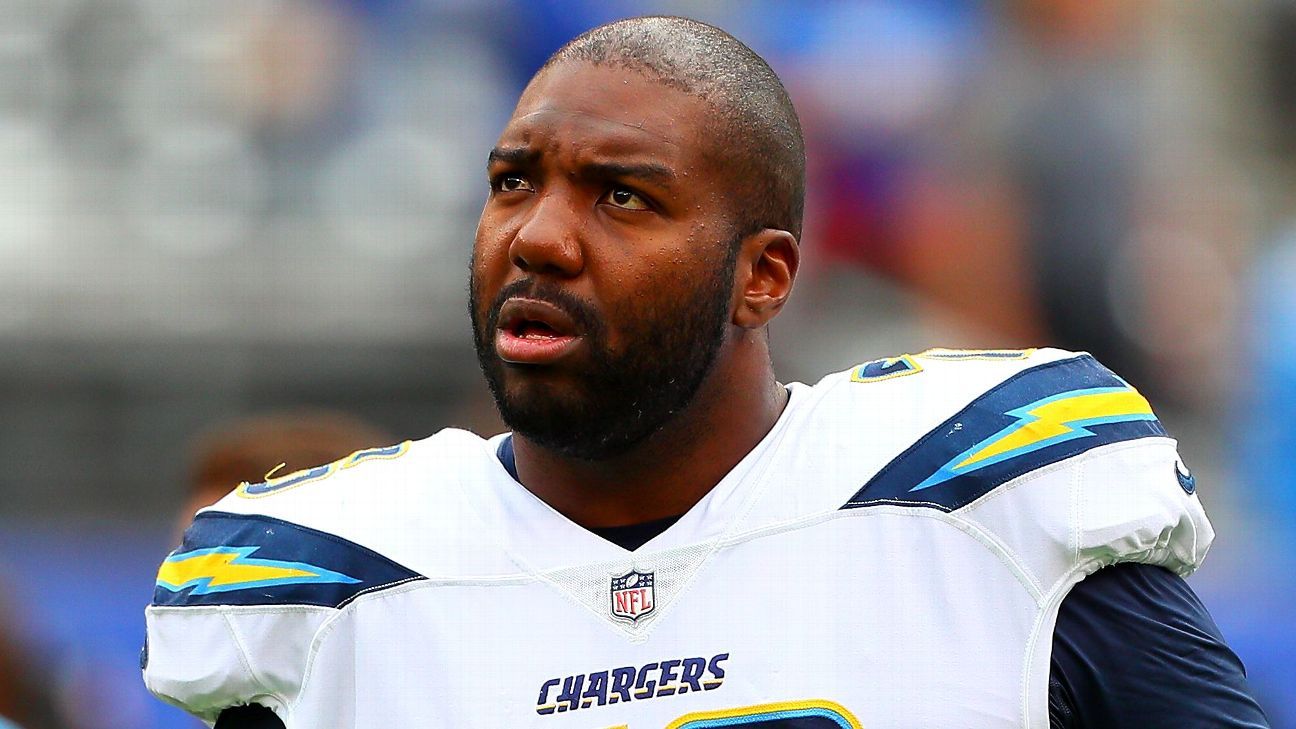
KEY BISCAYNE, Fla. -- Soon-to-be Carolina Panthers offensive tackle Russell Okung has accused the National Football League Players Association of negotiating the proposed CBA in bad faith, taking the step of filing an unfair labor practice charge with the National Labor Relations Board Monday.
In the filing, Okung is accusing NFLPA executive director DeMaurice Smith of pushing the new CBA to a vote through to the entire group of players despite the objections and vote of the NFLPA executive committee.
Okung has been among the most vocal players expressing disdain about the new proposed CBA and a potential 17-game season, and saying NFLPA-NFL negotiations are not representing players' best interest in terms of health and safety. This filing with the National Labor Relations Board, a federal government agency that enforces and protects employees against unfair labor practices, speaks to those issues.
Smith and the NFLPA declined comment on the matter. Okung declined to speak further about the topic.
During a February vote, the executive committee voted 6-5 not to recommend the proposed CBA to players. After a meeting with owners during the NFL combine, the executive committee again remained in majority on its desire not to recommend the proposed deal.
The NFLPA then took a vote of all 32 team player reps in Indianapolis, with the vote being 17-14 to approve the deal, with one player abstaining. The NFLPA needs a two-thirds vote to pass the deal along to the full player group with recommendation, but short of that number they decided to still move the vote to the full player group without recommendation because they received a simple majority vote to approve.
The vote on the new CBA was sent to players last Thursday, and it will be open for voting via DocuSign until Saturday at 11:59 p.m. ET after a two-day extension was announced Monday. There needs to be just a simple majority (50% plus one vote) to pass the new proposed CBA.
The New York Times first reported Okung's filing.
Okung also put his name in the hat in the ring for NFLPA president Monday afternoon along with New York Giants safety Michael Thomas, Cleveland Browns center JC Tretter and Tampa Bay Buccaneers linebacker Sam Acho, a source told ESPN.
Voting will take place midday Tuesday.
Okung, who has been a member of the NFLPA executive committee since 2018, is a clear "no" vote on the new CBA and actively has been attempting to halt this new deal from happening. Thomas is also a "no" vote on the CBA, while Acho is a "yes" vote. Tretter hasn't made public which way he's voting on the deal.
Malcolm Jenkins, Richard Sherman and Lorenzo Alexander were among those nominated who declined to run for president, a source said. Sherman, in turn, nominated Thomas.
All 32 team player reps hold a vote to nominate the new president.
There will also be a vote for a new executive committee Tuesday after the president vote. Titans linebacker Wesley Woodyard is one player seeking an executive committee seat, he told ESPN.
Timing is a little awkward because voting on the new proposed CBA won't be complete until Saturday night. If the CBA is approved by a simple majority (50% plus one vote), there could be a scenario where someone strongly against the CBA is the NFLPA president or vice versa.
Eric Winston has been the NFLPA president since March 2014, but he's not eligible for another term because he didn't play in the NFL during the 2019 season.

The Memphis Grizzlies say forwards Jaren Jackson Jr. and Justise Winslow are expected to rejoin the team within the next week.
Jackson has been out since Feb. 21 with a sprained left knee. He ranks second on the Grizzlies with 16.9 points per game and leads the team with 1.6 blocks per game.
Winslow, acquired in a trade with the Heat last month, has yet to play for the team due to a back injury.
Also, Memphis says Brandon Clarke is progressing from a right quad injury and is expected to return to the team this season. Clarke is averaging 12.0 points and 5.8 rebounds this season while shooting 62.3% from the field.
Memphis sits in eighth place in the West, with a four-game lead on the New Orleans Pelicans.
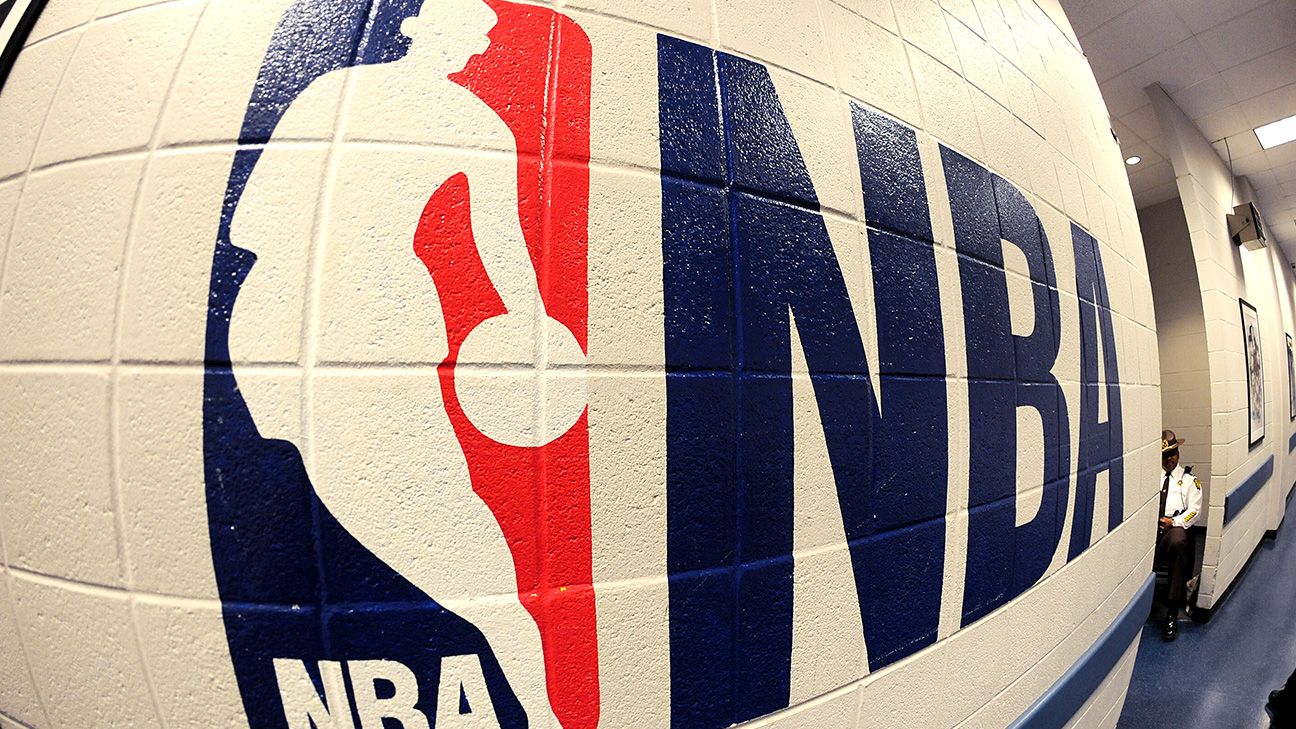
The NBA has scheduled a conference call for Wednesday afternoon with team owners and governors to discuss next steps in the growing coronavirus crisis, league sources tell ESPN.
There are escalating concerns among many owners and executives that the NBA could be headed toward games played with only essential personnel in arenas, but so far, the league office has only pushed teams to be prepared should that necessity arise.
There are no current mandates from any national, state or local officials that NBA games should be played without fans, based upon the outbreak of the coronavirus in North America.
Nevertheless, the NBA has teams ramping up preparations for contingencies based upon emerging details and consultations with medical experts and municipalities.
There is also a conference call on Monday night for team physicians and athletic trainers with the NBA, according to a memo obtained by ESPN on Saturday.

Can anyone in the Western Conference catch the Memphis Grizzlies for the final playoff spot?
On opening night, this would've been an unlikely question. With just over a month remaining in the regular season, four teams are looking to provide a different answer. What's the prize for claiming the No. 8 seed? A road trip to L.A. to face the likely No. 1 seed Los Angeles Lakers.
Our experts break down the five teams in contention for the final playoff spot and address what's on the line if they don't qualify.
Memphis Grizzlies
Basketball Power Index Playoff Odds: 37.4% | FiveThirtyEight Odds: 18%
Why they'll make it: The Grizzlies have a 4-game cushion over the current ninth-place Sacramento Kings and New Orleans Pelicans for the West's final seed. Ja Morant is the rare rookie who tends to rise to the moment -- and reinforcements will arrive soon for Memphis. Power forward Jaren Jackson Jr. is likely to return from a sprained knee this week. Small forward Justise Winslow, acquired at the deadline but sidelined by a back injury, is making progress toward a Memphis debut. Winslow has done contact work in practice and wrapped up his pregame workout Friday night with an eyebrow-raising windmill dunk. Rookie forward Brandon Clarke (quadriceps) is a little further away but expected to return during the regular season.
Why they won't make it: Memphis has the most difficult remaining schedule in the league, according to BPI. The Grizzlies are extremely inexperienced after moving veterans Jae Crowder and Solomon Hill in the trade for Winslow -- nevermind the playoffs, their three leading scorers don't have any meaningful late-regular-season experience. Winslow is a wild card. And while Winslow could help, it wouldn't be surprising if a young player who has been hurt most of the season initially struggles in a new system.
What's at stake: They've greatly exceeded expectations just by having a chance to compete for a playoff spot so early in the franchise's rebuilding process. The big question about Memphis coming into the season was whether the Grizzlies would be bad enough to keep the top-six-protected pick they owe Boston, not whether they'd be one of the West's top eight teams. It's all house money from here. At minimum, Memphis' talented young core and first-year coach Taylor Jenkins get an invaluable developmental opportunity after earning the chance to play in March and April games that really matter.
-- Tim MacMahon
BPI Playoff Odds: 35.6% | FiveThirtyEight Odds: 60%
Why they'll make it: In three words: sche-du-le. It's not just that the Pelicans have the easiest remaining schedule among West teams, according to BPI, it's also that they've played the hardest schedule thus far, which makes it all the more impressive that New Orleans' minus-0.8 point differential is best of the contenders for eighth. Since Zion Williamson's return, that has improved to plus-4.3 points per game, ninth-best in the NBA over that span. If the Pelicans keep up that level of play, they should finish the regular season on a tear. Just two of their remaining games are against above-.500 teams.
Why they won't make it: Four games back in the loss column with 19 to play means little margin for error against the sub-.500 opponents New Orleans faces. Last week's home loss to the Minnesota Timberwolves caused the Pelicans' statistical projections to tumble, though FiveThirtyEight's model based on individual player ratings still has New Orleans as more likely than not to make the playoffs at 62% (BPI simulations put their chances at under 25%). In particular, head-to-head matchups with the Grizzlies on March 21 and March 24 loom large. The Pelicans also must avoid further key injuries with veteran guard JJ Redick sidelined by a hamstring strain.
What's at stake: No team in this race has a brighter future than New Orleans, which boasts in Williamson the No. 2 player in our rankings of NBA talent 25 and younger. The biggest question is how to best build around Zion's unique skillset, and a matchup with the Lakers would help answer those questions ahead of fellow starters Derrick Favors and Brandon Ingram (restricted) hitting free agency. As new lead executive David Griffin evaluates the roster, he'd surely like an opportunity to see it in the playoffs -- and also to evaluate head coach Alvin Gentry, whose future is uncertain, in that setting.
-- Kevin Pelton
Sacramento Kings
BPI Playoff Odds: 9.3% | FiveThirtyEight Odds: 8%
Why they'll make it: The Kings are playing their best basketball of the season, 7-3 in the past 10 games, and 10 of Sacramento's final 18 games are at home. Those 10 games feature stretches of three and six games in a row. The Kings do play the Dallas Mavericks and both Los Angeles teams in those 10 games, but they also face five teams below .500. While their season ends with four of five on the road, two of those opponents, the Denver Nuggets and the Lakers, could be in rest mode with two others, the San Antonio Spurs and Minnesota Timberwolves, counting the days until the offseason. It also helps that the Kings would have the tiebreaker over Memphis if they were to finish tied for the last spot.
Why they won't make it: The 17-point home loss to the undermanned Philadelphia 76ers on Thursday and falling behind by 17 points early to Detroit at home on March 1 (the Kings did pull this one out, 106-100) proved this roster cannot be trusted. While its play of late has been above-average, Sacramento is four games in the loss column behind Memphis and will have to put together a home win streak and play .500 basketball on the road. For the season, Sacramento has not won more than three games in a row.
What's at stake: How about ending a playoff futility streak that stretches back to the 2005-06 season? Despite the fact that a first-round exit most likely awaits at the hands of the Lakers, there is no better experience for players like De'Aaron Fox and Buddy Hield than the postseason. With Bogdan Bogdanovic a restricted free agent and Fox extension-eligible, a postseason spot would help justify the significant financial commitment. There is also the Golden State element looming. Assuming the Warriors return to health in 2020-21, the Kings' opportunity to compete for a final playoff spot could be limited. We can already pencil in both Los Angeles teams, the Houston Rockets, the Utah Jazz, the Nuggets, the Oklahoma City Thunder, the Mavericks and the Warriors as the eight projected playoff teams for next season.
-- Bobby Marks
San Antonio Spurs
BPI Playoff Odds: 7.0% | FiveThirtyEight Odds: 1%
Why they'll make it: After wrapping a road trip in Cleveland on Sunday, the Spurs have 12 of their remaining 19 games at home and 10 of them are against teams with losing records. And they have some control over their destiny -- five of those games are against contenders for the eighth seed. San Antonio improved its 3-point shooting, both volume and accuracy, over the past two months and is fifth in percentage since the All-Star break. With young teams around the Spurs in the standings, they have an experienced veteran core that could prove valuable for a stretch run.
Why they won't make it: Quite simply, this is the worst defensive team Gregg Popovich has coached since his very first season, ranking a miserable 26th. LaMarcus Aldridge has missed six straight games due to a shoulder injury and his status is unclear. And Jakob Poeltl is out two to four weeks with a knee injury, leaving the Spurs depleted inside. Though he's declared himself fine, DeMar DeRozan's offensive output has dipped since a bout of back spasms shut him down for two games last month.
What's at stake: The Spurs have a 22-year run of making the playoffs, tying the NBA record and currently holding the longest such streak in major American sports. The Spurs are likely facing a rebuild, at long last, no matter how this season ends. But no one wants to be remembered as the team that ended this streak.
-- Brian Windhorst
BPI Playoff Odds: 10.6% | FiveThirtyEight Odds: 11%
Why they'll make it: There's one big reason -- Portland has Damian Lillard and the other teams do not. "Dame Time" is all about coming up clutch, and the Blazers are in need of some last-minute heroics here. They are also getting healthy, with Zach Collins and Jusuf Nurkic returning soon. The Blazers aren't the same team that made a surprising run to the Western Conference finals in 2018-19, but at full strength, they aren't that far from it.
Why they won't make it: They're 27th in defensive rating. Since Jan. 1, they're 29th, better than only the Cleveland Cavaliers. Relying on Lillard and CJ McCollum to go nova every night is not a great plan -- nor is it sustainable. The Blazers were a stout defensive team last season, with gritty role players filling in around two high-level backcourt scorers. They had depth, they had talent. There's a lot less of that to go around right now. Even with Nurkic and Collins eventually returning, they'll be working back into form on the fly.
What's at stake: Missing the playoffs a season after a breakthrough to the conference finals that validated so much of the patience and sustainability of the franchise would be troubling. But it wouldn't be crushing. For a team without a lot of levers to pull to stock up around their backcourt stars, having a lottery pick wouldn't be the worst thing. It could, though, show enough cause to make the changes many figured would come at some point. Maybe it's shaking up the Lillard-McCollum backcourt, maybe it's parting with coach Terry Stotts. Or maybe the Blazers recognize what a bad-luck season it was, get healthy over the summer, pick a top-14 player and get back in the mix next season.
-- Royce Young
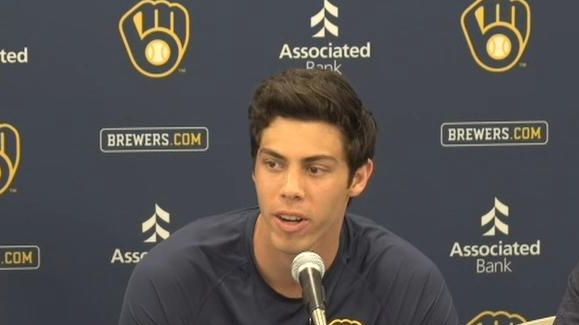
Milwaukee will be paying Christian Yelich until 2042, when the All-Star outfielder is 50 years old.
Yelich's $215 million, nine-year contract with the team calls for the Brewers to defer $4 million each year from his $26 million annual salary from 2022 to '28. The deal includes a $20 million mutual option for 2029 with a $6.5 million buyout, and $2 million of the buyout would be deferred.
If the buyout is owed, the $30 million in deferred money would be paid in 12 installments of $2.5 million each July 1 from 2031 to '42. If the buyout is not owed, Yelich would receive the $28 million in 11 installments of $2.3 million each July 1 from 2031-41 and a final payment of $2.3 million on July 1, 2042.
Yelich's new deal includes salaries of $12.5 million for this year and $14 million in 2021, the same as in the last two guaranteed seasons of the nearly $49.6 million, seven-year contract he signed in March 2015 with Miami. None of that money will be deferred.
The outfielder would get $100,000 for winning the MVP award, $75,000 for finishing second in the voting and $50,000 for third. He won the 2018 NL MVP and was second in last year's balloting.
He would get $50,000 each for All-Star selection, World Series MVP, Silver Slugger, Hank Aaron Award and Comeback Player of the Year. He would get $25,000 apiece for League Championship Series MVP and Gold Glove.
As part of the agreement announced Friday, Yelich has the right not to be traded without his consent. He also gets four premium tickets for 20 mutually agreed upon regular-season games annually.
Yelich, 28, is a two-time All-Star and a one-time Gold Glove winner.
Verlander has lat strain, unlikely for Opening Day

WEST PALM BEACH, Fla. -- Houston ace Justin Verlander has a mild strain of a back muscle and said it would "probably take a miracle" for him to pitch in the Astros' opener at Oakland on March 26.
In an effort to remain positive, Verlander quickly added, "but I don't want to leave miracles off the table."
The reigning AL Cy Young Award winner was hurt on his second-to-last pitch in Sunday's exhibition game against the New York Mets. He had an MRI on Monday and was diagnosed with a strained latissimus dorsi muscle. There is not a timetable for his return.
"Talking with doctors and looking at the scans, it's definitely not worst-case scenario," Verlander said. "Best-case scenario would be nothing. It's just probably somewhere in the middle of that."
The 37-year-old right-hander's velocity was down from his previous start, and he was removed after two scoreless innings of a scheduled four-inning outing.
"Hardly noticed it, to be honest," Verlander said of the injury-inducing pitch. "It didn't quite feel right, just felt maybe I was a little off mechanically or something -- kind of one of those spring things. Then in between innings, it started to tighten up a bit."
Groin tightness slowed Verlander earlier in spring training. He said he did not know whether the two issues were related.
Verlander had a similar lat injury during spring training in 2015 and did not make his season debut until June 13. He finished 5-8 with a 3.38 ERA in 133⅓ innings for Detroit.
"Scans can say a lot of stuff and MRIs can say a lot of stuff, but one of the most important things is how you feel physically," Verlander said. "I'm trying to be very truthful with myself. I'm trying to recall also how I felt in '15. I definitely feel better this time than then."
A two-time Cy Young winner and the 2011 AL MVP, Verlander was 21-6 with a 2.58 ERA in 223 innings last year.
Verlander led the league in innings last season even with Houston managing his workload with extra days off and cutting his starts short when the Astros had big leads.
"The innings piled up because I pitched well," Verlander said. "I would rather continue to pitch well and have the innings pile up."
Zack Greinke likely will be the only one of last season's top three starters to open the season on the active roster. He allowed one run in four innings against Detroit on Monday.
No. 2 starter Gerrit Cole left as a free agent and signed with the New York Yankees. This year's projected No. 3 starter, Lance McCullers Jr., is recovering from Tommy John surgery in November 2018. Jose Urquidy, fourth on the depth chart, showed promise in seven regular-season starts and four postseason appearances last year.
Josh James, Framber Valdez and Austin Pruitt were all vying for the final rotation spot prior to Verlander's injury.
"You're ultimately trying to cover 1,400 innings as best as you possibly can," Houston general manager James Click said. "The five guys that you say are your starters on Opening Day, I don't know the last time a team went through the season with only five of them. We know we're going to have to be six, seven, eight guys deep."
Verlander went from +450 to +600 to win the AL Cy Young at Caesars Sportsbook off the news that he's unlikely to be ready for Opening Day.
ESPN's Ben Fawkes contributed to this report.
I played clean in the steroid era -- and PEDs hurt players more than sign stealing does
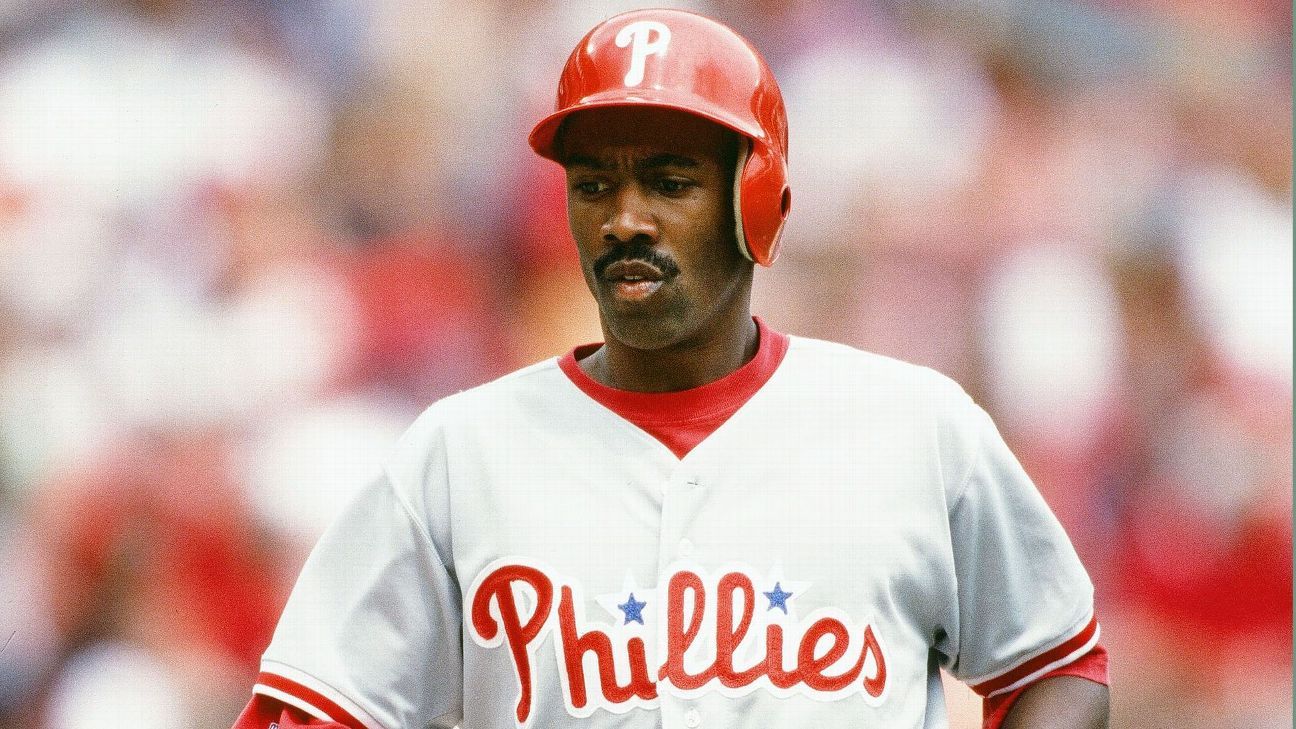
WHEN I WAS traded to the Philadelphia Phillies in the winter of 1997, I was walking into a competition with Lenny Dykstra. He was at the end of his career, injuries were plaguing him and the cloud of performance-enhancing drugs swirled around him.
So right out of the gate, I had to beat out a player later named in the Mitchell report. He ultimately retired that season, and so began my starting years in Philadelphia. Within five seasons, I was aging and less productive and the next center field era was knocking on the door. By 2002, my days were numbered.
It was then when Marlon Byrd swept into Philly.
Although I started as a mentor to Marlon, we also built a friendship. I looked out for him like Shawon Dunston and Garry Maddox once did for me. He was the two-time minor league player of the year (in 2000 and 2001) in the Phillies' organization and would ultimately replace me as the team's center fielder. In 2002 (still before any significant PED testing program), when I was turning 32, I was losing my starting job, and by the next year, the writing was on the wall that if I stayed with the Phillies, I would be backing up Byrd. So I left for Texas as a free agent in 2003.
In 2004, I was back in Philly as the veteran wise man. Byrd struggled that season, but I was no longer considered a starter, and by 2005, I decided to retire. Byrd went on to have a 15-year career framed by many successes but also two suspensions for banned substances, both of which he denied were taken to enhance his performance on the field. I felt pride in his successes, but when his suspensions came down, I felt a sense of betrayal. The second of the suspensions -- a 162-game ban -- pushed Byrd to retire, which was a gut punch of two fists -- disappointment and responsibility as his mentor. Even though his first suspension did not occur until 2012 and I retired in 2005, I still reflexively asked myself the question: Did he replace me fair and square? I even questioned a common tradition in baseball -- assisting your replacement.
The inequities of PED use make it personal. With the proliferation of PEDs, there was always a chance you could be supporting a teammate who was using in order to replace you -- even if that was not his original intent. It can be right under your nose. As players started to fully understand the impact of PEDs on their careers, clean players became unsure who was friend or foe when it came to their job security. If you are clean, PEDs immediately put you on the downhill side of your career, and if you are already declining like I was in 2002, PEDs push you off a cliff.
Sign stealing does none of that.
THERE ARE A few steps you need to climb to make the major leagues and stay there.
First, you need to get an opportunity. Next, you must put up the numbers or show enough value to earn a consistent role. Then you must maintain that level -- and, hopefully, get paid accordingly. And then you must keep proving yourself, again and again.
If you can stay healthy, a long-term salary and continued production are the keys to your security and leverage. If you have either, you will get an opportunity. Somewhere. Some time.
It certainly helps to have both.
So what do PEDs do to damage a clean player's future in this equation?
A whole lot more than a team stealing your signs.
Remember how you get security in this game. Every year you survive in the major leagues, you will be compared -- directly, to the people inside your organization for a specific job, and indirectly, to others with your seniority and who play your position. This assigns you a value in the marketplace.
Any time a player comes to the negotiating table, he is compared to other players based on three primary data points: productivity, service time, position.
In the PED era, numbers got juiced, and when enough players juice up, it raises the bar at any given position. And I don't mean in a spiritual, greatness kind of way. It shifts the expectations of how that position should produce, artificially. It influences the money an organization will commit to you and it directly influences your opportunity.
In my case, if eight more center fielders juice up, I have a career advancement problem. I can lose eight job opportunities. All of a sudden, the average center fielder has higher power standards than he did before, and if I stay a singles hitter, my career changes for the worse. I could be relegated to a fourth outfielder (if I am even still on the team). It happens quickly enough without PEDs involved, let alone with them.
After looking back and seeing who I was compared to during this time, I realized I had been competing against demigods.
The Astros -- or any sign-stealing team -- benefit as a unit, but from the perspective of a center fielder who needs to look for work the next season, outside of the cheating club's center fielder hitting well because of the sign-stealing system, it does not elevate the entire position throughout the league. If the season ends and I am compared to one sign-stealing center fielder, it might hurt a little, but not like it would if half the league's center fielders were on PEDs.
And you can substitute "center fielder" there for any position player; the effect is the same.
You can factor in one team's transgressions more easily, too. I can tell my agent, "Well, it is unfair to compare me to an outfielder who knew what pitch was coming the entire season," and it would be a compelling argument. We can make the case to treat Houston outfielders as an aberration like we might for Colorado players and the high altitude. An outlier. One "clairvoyant" center fielder in Houston probably does not keep me out of the big leagues. Seventeen juiced outfielders does. And keep in mind, I also had to hit off of juiced pitchers. Sign stealing doesn't help pitchers -- they are the doormats in that scheme (and if anyone can claim to take sign stealing personally, it's them, though still on a much smaller scale).
If half of the league's offenses illegally steal signs for an extended period of years, the expectation for a center fielder could shift, but it takes an enduring league conspiracy to shift it significantly. A leaguewide epidemic would collectively inflate the offensive numbers, but that was not the case with the Astros. Even if we accept the likely case that it was more than just the Astros cheating, we still can't say it was prevalent throughout all of Major League Baseball. This, of course, depends on what MLB and the MLBPA do next to curb it.
Although I cannot claim to know the exact percentage of players who used PEDs during my playing days, there were more players juicing than a single team's worth, and it endured. If you just peel the numbers out of the Mitchell report (89 players listed), and consider this report only scratched the surface given the names implicated since, it is clear this was not just one rogue group of players at BALCO or Biogenesis.
IN 2003, I signed as a free agent in Texas, but two weeks into the season I tore a hamstring tendon running to first base. After I rehabbed my way back from surgery and after hours and days in the training room and on minor league assignments, I made it back in June. Then-Cardinals infielder Fernando Vina had the same injury a week before I came back from my six-week rehab. He called me to help him get back to health. He wasn't a teammate, he was not a friend, but he was a colleague in the fraternal order of MLB, so I helped.
So years later, when Vina admitted to his HGH use that landed him on the Mitchell report, I took it personally because he cited the injury we both had as to why he regrettably took HGH during his recovery. We were both in our early 30s at the time, and any player who has an injury that late in his career faces the possibility of being discarded like the weekly trash. Every player knows that fear. His desperation, he said, led him to make a poor choice. Yet I had openly helped him by sharing my rehab workouts ... underwater training, ultrasound therapy and so on. Seeing his name in the Mitchell report made me feel like I had aided and abetted the enemy.
I was traded to the Cubs in July 2003 and saw Vina when we played the Cardinals in September. He was still hobbling around from his injury. When the season ended, at age 34, he got a multiyear, multimillion-dollar contract with the Tigers. At age 32, I signed a one-year deal with the Phillies at a near 50% pay cut, in the final year of my career. Although we did not play the same position, we were both leadoff-type hitters with comparable careers, but the difference in opportunity at the end of our careers was stark.
Illegal sign stealing doesn't pit players against one another directly in this way. Yet sign stealing and PED use share the elements of greed and cowardice. With PEDs, it makes you paranoid that anyone could be the enemy of fair competition, even your own teammates. It isn't a level playing field -- you are playing on a completely different field altogether.
Competing in the big leagues, like any sport, is more than just beating the team in the other dugout. It is outlasting some people on your own team. You are fighting for a position and the guy in your way is wearing the same uniform, even as tradition insists that you help your fellow brother. Pass the game on. Sure, you want to win, sure, you will pull together when the bell rings, but when the other guy is on PEDs, your career gets shorter.
And where you are in your career will dictate the risks you are willing to take. It will also dictate the impact of not taking certain risks. When you are on the bubble and need an extra boost, when you are injured and mapping out a recovery, when you are in a contract year, when you are going to arbitration or into free agency, when you are aging out, all of these numbers swirl around your head and dangle the temptation to do something "extra" for just this year, knowing it might become a career habit. Stealing signs is not an individual choice like taking PEDs. Your team might get away with it, you might even win a World Series, but the leaguewide statistical inflation, which is how you are compared in the game, is relatively minimal when it is contained to one team.
Still, there is no doubt illegal sign stealing is a serious threat to the game's integrity, toxic to the value of a championship, and poisonous to the core value of fair play. We cannot underestimate the enduring and indelible damage caused by what we learned about the Astros' championship season in 2017 and how they abused technology. But when we say it is worse than PEDs, we still must be clear about which lens we are looking through. Through the eyes of a position player who chose to play clean during the steroid era, PEDs stalked you until aging prevented you from outrunning it anymore. Then, it was over.
It is important to weigh what any scandal does to people who are following the rules. Those clean players are not just playing a few games tilted against them by stolen signs -- they are competing for years while a legion of superhumans tilt the entire field against them.
In hindsight, it is disheartening to know my career was framed entirely inside the steroid era. That when I broke in, when I fought to keep my starting job and when I was holding on to my last baseball breath, PEDs put a finger on the scale. But I was far from alone. My story is the story of many players.
PEDs have the power to push you out of the game much more quickly and thoroughly than one team illegally stealing signs.
And maybe most cruel of all, sometimes that final push can come from the guy high-fiving you in the dugout, wearing the same uniform.
Jarrion Lawson has ban lifted in ‘contaminated beef’ case

World long jump silver medallist can return to competition following Court of Arbitration for Sport decision
The four-year ban handed to American long jumper Jarrion Lawson has been lifted following a successful appeal at the Court of Arbitration for Sport (CAS).
Lawson was suspended after testing positive for epitrenbolone, a metabolite of the prohibited steroid trenbolone, but the 2017 world silver medallist maintained that the likely source of the substance was contaminated meat which he had eaten for lunch the day before the test in June 2018.
On Monday (March 9) the CAS confirmed that Lawson’s ban had been overturned, ruling that he “bears no fault or negligence” for the anti-doping rule violation.
“The CAS Panel found it more likely than not that the origin of the prohibited substance was contaminated beef consumed in a restaurant the day before the test,” reads a CAS media release in part.
“Following a very careful review and examination of the evidence and expert testimony in this procedure, the Panel was unanimously of the view that Jarrion Lawson had established that he bore no fault or negligence for his positive finding under Article 10.4 of the IAAF Anti-Doping Rules.
“As a consequence of such finding, the period of ineligibility was eliminated.”
The full CAS media release can be found here.
The road to London: What a difference a race makes

In the latest instalment of his training blog, AW’s Euan Crumley heads to Cambridge on a half-marathon mission
There had been a small glimmer of encouragement on Glasgow Green. Running for my club in The Allan Scally Relays on the final day of last month, I had been pleasantly surprised not just by the time it took to complete my 5km leg, but also the manner in which I had completed it.
It had felt like I was in a position of strength, that there was more to give and that maybe, just maybe, my training for the Virgin Money London Marathon was actually starting to work.
In recent weeks, it had been really hard to tell. The unrelenting storms which brought so much rain, wind, hail and snow had made finding optimum performance a harder trick to pull off than normal, while the concept of building momentum was beginning to feel increasingly alien. That was why the relays run had been such a source of encouragement.
In the context of preparing for a marathon, of course, running a 5km well is one thing but it’s over the longer distances that the real indications of progress start to kick in and where confidence can truly be built. I was therefore delighted to accept a very kind invitation from Saucony UK to run last weekend’s Saucony Cambridge Half Marathon.
As regular readers of this blog will know, I’m based near Loch Lomond, north of Glasgow, so this venture south not only presented the chance to run somewhere new but also in a location where there were at least some signs of spring showing!
READ MORE: The road to London: Whatever the weather?
There was the further incentive of allowing me an opportunity to experiment, too. With my local half-marathon already in the calendar for the coming weeks, Cambridge would allow me to test myself in a different way – by exercising some self restraint and putting in the kind of pacing practice which could come in particularly handy when marathon day rolls around.
With the sun shining, the atmosphere was building nicely on Midsummer Common as we arrived for the start of the event. My plan to was to run a little harder than marathon pace but to stick pretty rigidly to that pace, even if I found myself wanting to push harder. There was a bigger picture to think of here and I reminded myself that it would be a very good sign if it transpired that I was consciously having to hold myself back.
Setting off with the rest of the 11,000-strong field, I was mindful not to get too caught up in the first mile rush when every runner jostles, pushes and darts into any free inch of space, yet a quick glance at my watch at the first mile marker confirmed that I had followed the time honoured tradition of starting too fast.
A quick internal chat involving the word ‘relax’ did the trick and I set about finding a rhythm rather than the racing line. As we wound our way through the streets of the city centre and through the grounds of some of the famed university’s hallowed halls, I hoped that just being in the vicinity of these world renowned seats of learning might bring me some added running intelligence. My IQ may not have suddenly skyrocketed but it did feel, however, like my plan was working. Possibly too well.
Euan (left) during the early stages of the Saucony Cambridge Half Marathon
Impressed with the feel of the Saucony Fastwitch 9 shoes I was giving a spin, happy with the pace I was operating at and the level of effort it was taking to stay there, we reached halfway and my mind began to whir. “I feel good,” I thought to myself. “In fact, I feel much better than I thought I might. Do I forget the pre-race plan and push on?”
It was that classic scenario of having a conflicting voice on each shoulder – the devil that wants you to throw caution to the wind and the angel who wants to you to stay on the straight and narrow. I asked myself a simple question, however, and the debate was quickly over. “What would you prefer? A really hard half-marathon race right now or some sort of sign that your marathon plan is working?”
“Run your own race” is a phrase endlessly repeated across this sport – and with good reason. I was content to let others pass by, or satisfied to move past others without pushing the pace. The whole aim of the exercise was to keep disciplined and it was a test I wanted to pass.
As we came back into the city centre and the welcoming bustle of the beautiful, narrow streets I also allowed myself to simply enjoy where I was running. I looked up and took in the scene – not something I’m always very good at doing during races – and savoured the chance to run with the sun on my back.
There was definitely a smile on my face, too, when I crossed the line at what is an excellent event on a varied and interesting course. My PB hadn’t come under threat but that had never been the point. I had asked a few questions of myself and got the answers that I was looking for. The marathon training plan is beginning to bear fruit and coronavirus hasn’t managed to call a halt to the marathon just yet, so on we go…
England's Joe Marler and Courtney Lawes cited after Wales game
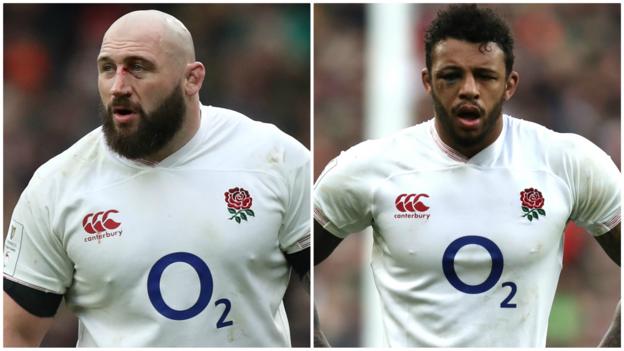
England's Joe Marler and Courtney Lawes have been cited following Saturday's Six Nations win over Wales.
Prop Marler, 29, grabbed Alun Wyn Jones' genitals during the first half at Twickenham, with the Wales captain calling for action after the match.
Lock Lawes, 31, was cited for a dangerous tackle during his side's 33-30 victory.
The pair will appear before a disciplinary hearing in Dublin on Thursday.
England centre Manu Tuilagi will also be at Thursday's hearing following his red card for a high tackle late in the fixture.
Marler could be in for a long lay-off, with four levels of punishment length under World Rugby rules.
The shortest ban for "grabbing, twisting or squeezing the genitals" is 12 weeks, with a top-end level of 24 weeks or more, up to a maximum of 208.











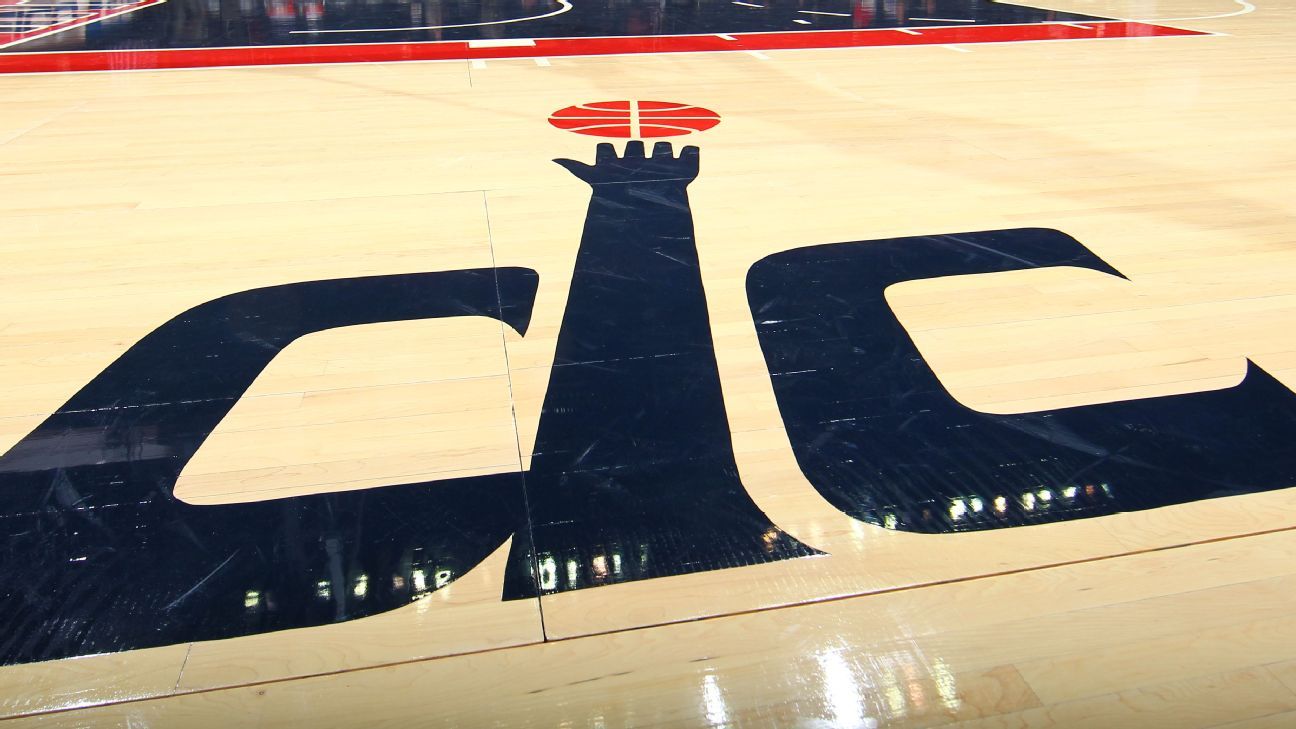
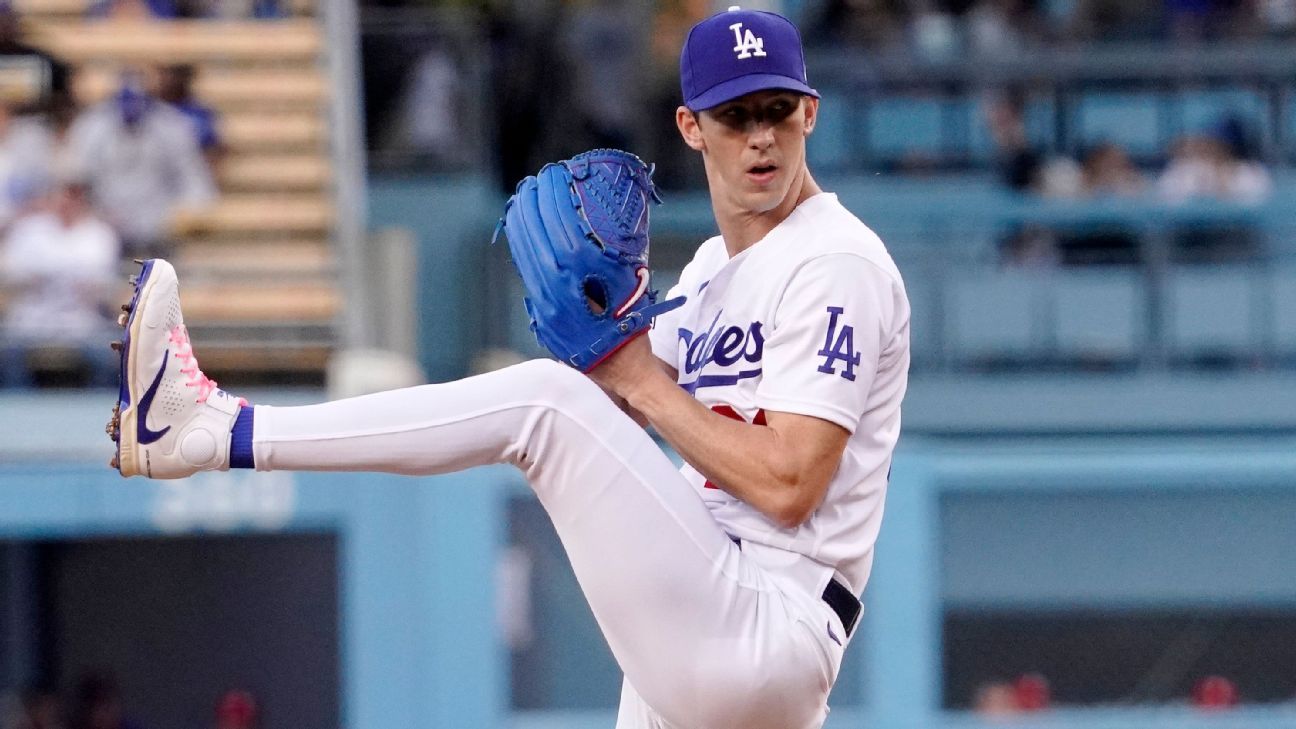


 Phone: (800) 737. 6040
Phone: (800) 737. 6040 Fax: (800) 825 5558
Fax: (800) 825 5558 Website:
Website:  Email:
Email: 






